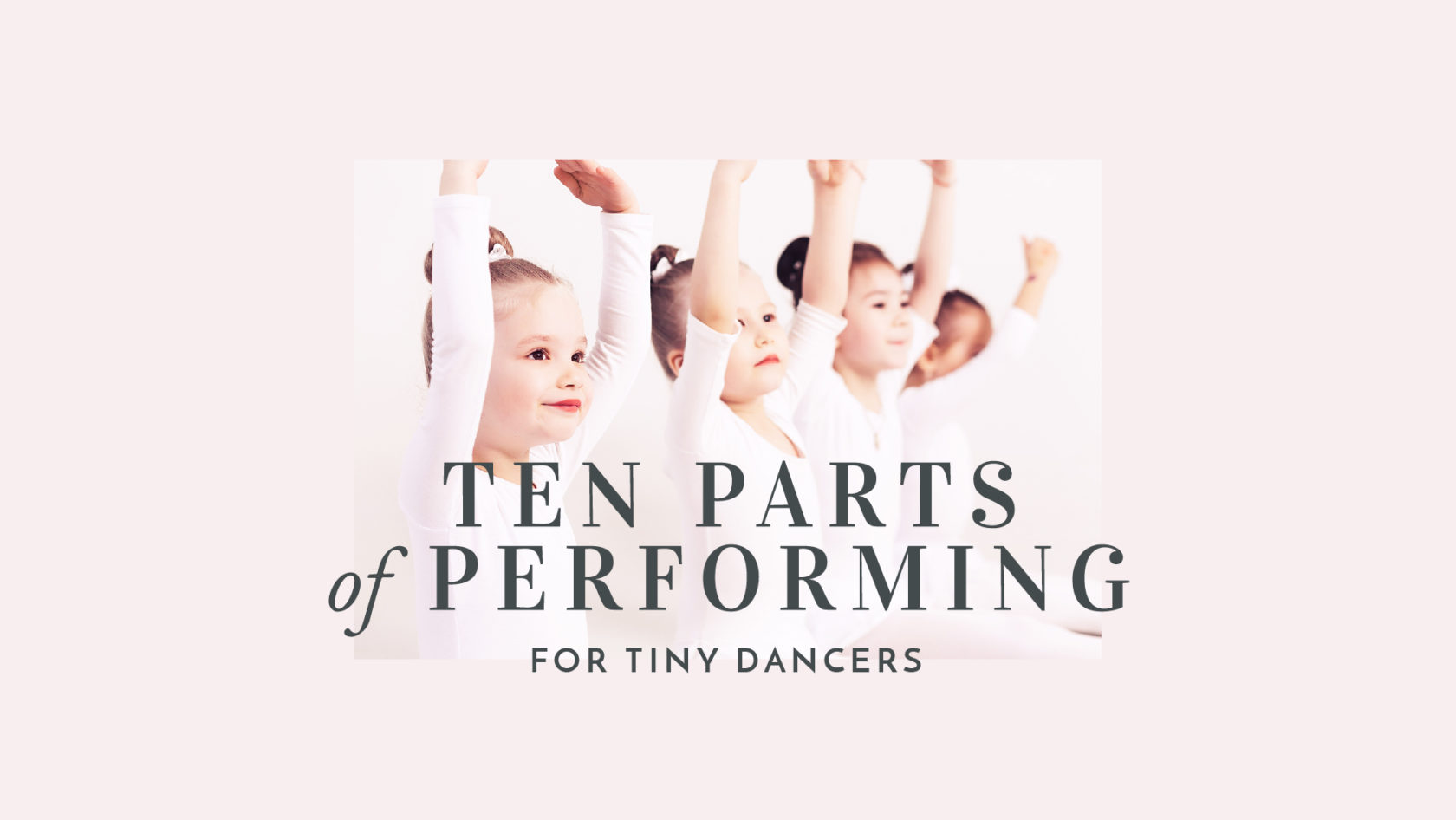There is so much more to a successful performance than what happens on stage. There is the before and the after. But often times these parts get overlooked or completely forgotten in younger classes. With the pressure to get everyone stage ready, it is no wonder we allow that momentum to speed us right past these other lessons.
But we want well educated dancers, so we must educate them. From the very beginning.
The parts of your dancers’ performance will depend much on how your studio handles their recitals/concerts. For the sake of this article, let’s imagine that the dancers are to be dropped off backstage where they will wait for their performance.
PART ONE—Arriving at the theater.
They need to understand how a person behaves in the theatre and the privilege it is to be allowed backstage. This very first part sets the tone for the rest of the evening. From the time they enter the theater, they are dancers, and are expected to handle themselves as such.
PART TWO—Changing into costume.
They need to understand their costume is expensive and should be handled with care. Performers do not throw their clothes and belongings about. They keep their things orderly. They do not touch other dancers’ costumes or items. If we prepare in an organized way, then we will perform in an organized way.
PART THREE—Waiting backstage.
They need to understand the wait can be very long. They will probably get bored. Other dancers are performing, and they are expected to wait their turn with respect. Quiet activities are allowed. Constantly asking when it is their turn is not allowed. They are to trust that the backstage crew will do their jobs and let them know when it is their turn.
PART FOUR—Going to the wings.
One of the most thrilling times! They will want to giggle and wiggle all about. They will want to touch the curtains and talk out loud. They will want to try to see what is happening on stage. They need to understand that it is ok to want to do these things, but it is not ok to do these things. The ONLY thing they are allowed to do at this time is to stand still and quiet. It is super hard! They need to know it is super hard.
PART FIVE—Making your entrance (if they begin on stage).
Taking their places on stage is sometimes the hardest part for younger dancers. Even with a rehearsal in the space, it can feel too different and they might wander about lost. It is so important to guide them carefully through these moments and let them know you are there. Always. If they enter in the dark, try to practice that in the studio. Talk about this part with them a lot. Help them imagine what it will be like and what it will feel like. Let them know someone is always there to help and they do not ever need to yell out when on stage. If they don’t know where to go, they should stand still and someone will be there to help soon.
PART SIX—The Dance!
No words needed for this one!
PART SEVEN—The Bow
They need to know the dance is not over yet. They must bow/curtsey. What a great honor to have people applaud our dancing! This should be rehearsed thoroughly in class. Let them know how you expect them to handle this part of this performance.
PART EIGHT—Exiting the stage.
They need to know they are not done after the bow. They absolutely must walk off the stage and they must do this in a calm way. They need to understand someone will be in the wings to guide them to the next place and they need to understand not to stop in the wings because then no one else can get off stage.
PART NINE—Changing out of costume (presuming they only have one piece).
Even though the dance is over and they are off stage, they are still dancers. They need to understand how to change out of costume and how to gather all their things so they are ready for pick up from their parents. Most young dancers will go, what appears to be, legitimately crazy after they come off stage. Their adrenaline is pumping and they have just experience that unmatched high of being a performing artist. It is intense for anyone. Imagine a tiny human dealing with all that energy! Talk to them about this prior and let them know all that excitement is wonderful, but it needs to be contained until the right time. The right time is not in the changing room.
PART TEN—Greeting your fans.
THIS is the time to let out that energy! Give all the hugs, say all the words, smile all the happiness! They need to be allowed to embrace this moment. This moment is when the people they love shower them with adoration over their hard earned accomplishment. It is something to be cherished, but is also something to be grateful for. Teaching our dancers gratefulness will serve them so well in their lives.
There you have it. Ten parts. The dance is just one part! While the dance is the focus of the night it is not the only element at play. There are so many lessons waiting to be learned in the theatre.
Related Articles


Comments
No comments for this post.
Add Comment